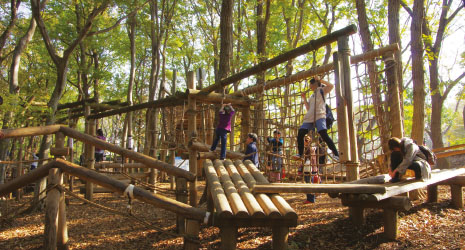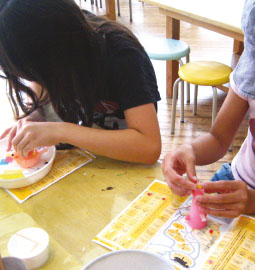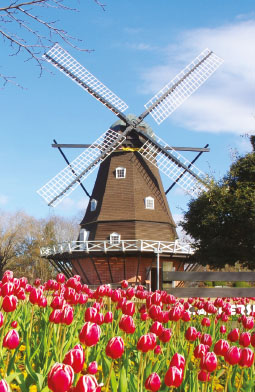Home > Highlighting JAPAN > Highlighting Japan December 2018 > The Art of Emotion: Japanese Entertainment and Hospitality
Highlighting JAPAN


A Park Straight Out of a Fairy Tale
Funabashi H. C. Andersen Park in Chiba Prefecture may be a municipal park, but it consistently ranks in the top of listings on international tourist review websites. Park operations director Tsukasa Fujita reveals the secrets behind the park’s popularity.
Funabashi City in Chiba Prefecture has a sister city in Odense, Denmark—the birthplace of famed children’s book author Hans Christian Andersen. In 1996, with Odense’s support, Funabashi opened a park named after the writer. For over two decades, Funabashi’s citizens have embraced H. C. Andersen Park, and in the past decade total visitor numbers have almost doubled. Park operations director Tsukasa Fujita notes that when the park was ranked as one of the top three Japanese theme parks by an international tourist review site in 2015, attendance shot up about 1.4 times that of 2014, exceeding 900,000 visitors.
“We’ve definitely seen more guests from outside Japan in the past few years. We don’t have anything special set up to target international tourists, though, and instead of any one part being more popular, they seem to enjoy exploring all five of the park’s zones.”
The five zones are designed to be fun for all ages, from children to seniors. The park’s thirty-eight hectares encompass Kids Kingdom Zone, home to a huge obstacle course; the Fairy Tale Hill Zone, where visitors can experience the world Hans Christian Andersen lived in with a sculpture of him, windmills, and a fairy tale museum that introduces visitors to Odense; the Children’s Museum Zone, which holds a multitude of workshops on everything from woodblock prints to pottery; the Nature Experience Zone, created to look like a traditional Japanese nature scene; and the Castle of Flowers Zone, with buildings and a playground designed to resemble Andersen fairy tales.
The park’s managers work particularly hard to give visitors a taste of the real Odense. The statue of Andersen is an exact replica of the one that exists in Odense, and craftsmen from Odense helped build the windmill. Many of the other buildings and workshop programs in the park have been created with the same loving dedication.
“This is a public park, so while it is a symbol of friendship with our sister city, we place great importance on providing experiences that anyone can enjoy,” Fujita says. “That’s why we plan a full slate of activities that use the five zones and the facilities we take such pride in, holding events every week, planting flowers all over the park so people can enjoy the beautiful scenery, and creating opportunities for visitors to get closer to the arts by offering workshops every day.”
For example, Fujita is in charge of maintaining the flowers, and states that great care is taken during planting to create a beautiful picture, both to look at and in photographs. If guests bring home the park’s beauty in pictures, paintings and photos, they’ll want to return, and recommend the park to friends and family. The park tries lots of new things, such as holding events to celebrate seasonal flowers and ensuring that something is always in bloom. This means there will be unusual varieties as well as flowers newly planted that year to entice nature lovers to visit.
“Whatever stage of life our visitors are in—children playing enthusiastically, couples on a date, visiting with family after getting married, or out for a stroll to view the flowers later in life—our aim is to create a park that anyone will find fun and exciting, even if they visit every day.”
Fujita believes it must be this approachable hospitality that delights and impresses guests who stop by during their visits to Japan. According to a 2016 guest satisfaction survey, the number of people who rated themselves “satisfied” and “very satisfied” increased by more than 1.7 times that of respondents to a 2006 survey, and “very satisfied” customers quadrupled. Monthly visitors and yearly users across all age groups also went up. It’s clear that the park is accomplishing its goal of being a magical place for people of all ages, no matter when they visit, and more visitors to Japan will no doubt discover its charms.
© 2009 Cabinet Office, Government of Japan








